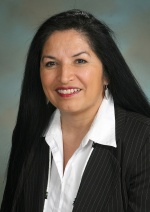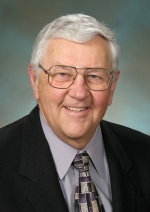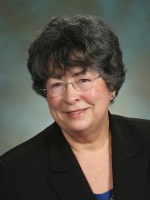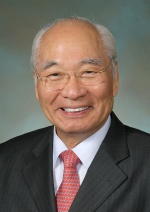Washington 2010 legislative election results
Senate
|
Alabama • Alaska • Arizona • Arkansas • California • Colorado • Connecticut • Delaware • Florida • Georgia • Hawaii • Idaho • Illinois • Indiana • Iowa • Kansas • Kentucky • Maine • Maryland • Massachusetts • Michigan• Minnesota • Missouri • Montana • Nebraska • Nevada • New Hampshire • New Mexico • New York • North Carolina • North Dakota • Ohio • Oklahoma • Oregon • Pennsylvania • Rhode Island • South Carolina • South Dakota • Tennessee • Texas • Utah • Vermont • Washington • West Virginia • Wisconsin • Wyoming |
| Other 2010 Election information |
Washington State Senate Election Results
This page contains macro-level election results and analysis for the Washington State Senate. For results in individual contests see our Washington State Senate elections, 2010 page. The following is a breakdown of the state senate before and after the election:
| Washington State Senate | |||
|---|---|---|---|
| Party | As of November 1, 2010 | After the 2010 Election | |
| Democratic Party | 31 | 27 | |
| Republican Party | 18 | 22 | |
| Total | 49 | 49 | |
What You'll See on This Page
This page displays the following lists of candidates
- Incumbents who ran on November 2
- Incumbents who were defeated
- Challengers who defeated an incumbent
- Newly elected senators
- List of all winners
- Unopposed candidates
- Third party candidates
State Senate Overview:
- There were 20 incumbents who ran in the November 2 general election. 5 incumbents lost, and thus 15 incumbents were re-elected to the Washington State Senate.
- There will be 10 new senators sworn-in, 4 Democratic candidates and 6 Republicans.
- Of the 25 seats up for election, 14 were won by Democrats and 11 by Republicans.
- 9 candidates were unopposed, 5 Democrats and 4 Republicans.
- Only 1 candidate ran as an independent or third party candidate in the general election.
Incumbency Analysis
Of the 1,167 state senate seats up for election in 2010, incumbents ran for 894 (76.6%) of them. Of these 894, 94 lost their re-election bids, 89 Democrats and 5 Republicans. In Washington, 5 incumbent senators did not run for re-election on the November 2 ballot, while 20 incumbents (80.0%) ran for re-election. There were 5 incumbents defeated, all 5 of which were Democratic incumbents.
Incumbents who ran on November 2
The following is a list of all of the incumbents who ran on the November 2 general election ballot:
Incumbents defeated

The following is a list of incumbents defeated on November 2:
| Candidate | Party | District |
|---|---|---|
| Chris Marr | ||
| Claudia Kauffman | ||
| Eric Oemig | ||
| Randy Gordon |
Challengers who beat an incumbent
The following is a list of challengers who defeated an incumbent on November 2:
| Candidate | Party | District |
|---|---|---|
| Andy Hill | ||
| Joe Fain | ||
| Michael Baumgartner (Washington) | ||
| Steve Litzow |
New State Senators and General Election Winners
388 new senators were elected across the country. This includes challengers who defeated incumbents as well as candidates who won open seats. Of these 388, 278 were Republicans and 110 were Democrats. In Washington, 10 new senators will be sworn-in, 4 Democrats and 6 Republicans. In total, Washington elected 25 senators, 11 Republicans and 14 Democrats.
Newly elected senators
The following is the newly-elected members of the Washington State Senate:
Democratic
Republican
Open Seat Winners
The following is a list of candidates who won election in seats where no incumbent was running:
Democratic
Republican
Candidates who won election
The following is a list of all candidates elected to the Washington State Senate:
Democratic
Republican
Competitiveness

Across the nation, 1,167 state senate seats were up for election in 2010. 1,143 of those seats were partisan seats (24 seats were up for election in Nebraska's nonpartisan unicameral legislature). In 320 (28.0%) of these state senate contests, there was a major party candidate with no major party opposition. In Washington, 12 candidates (24.0% of seats) faced no major party opposition. Of these 12, 1 was a Democrat and 11 were Republicans.
Unopposed candidates in general election
The following candidates did not face major party competition:
Democratic
Republican
Ballot Access
Across the nation, 140 independent or third party candidates ran for state senate. In Washington, 1 (2.2%) of the 45 senate candidates ran as an independent or third party candidate. None won election in the November 2 general election.
Third party candidates
The following is a list of third party and independent candidates who ran in 2010:
House
|
Alabama • Alaska • Arizona • Arkansas • California • Colorado • Connecticut • Delaware • Florida • Georgia • Hawaii • Idaho • Illinois • Indiana • Iowa • Kansas • Kentucky • Maine • Maryland • Massachusetts • Michigan• Minnesota • Missouri • Montana • Nebraska • Nevada • New Hampshire • New Mexico • New York • North Carolina • North Dakota • Ohio • Oklahoma • Oregon • Pennsylvania • Rhode Island • South Carolina • South Dakota • Tennessee • Texas • Utah • Vermont • Washington • West Virginia • Wisconsin • Wyoming |
| Other 2010 Election information |
Washington State House Election Results
This page contains macro-level election results and analysis for the Washington House of Representatives. For results in individual contests, see our Washington House of Representatives elections, 2010. The following is a breakdown of the state house before and after the election:
| Washington House of Representatives | |||
|---|---|---|---|
| Party | As of November 1, 2010 | After the 2010 Election | |
| Democratic Party | 61 | 57 | |
| Republican Party | 37 | 41 | |
| Total | 98 | 98 | |
What You'll See on This Page
This page displays the following lists of candidates
- Incumbents who ran on November 2
- Incumbents who were defeated
- Challengers who defeated an incumbent
- Newly elected senators
- List of all winners
- Unopposed candidates
- Third party candidates
State House Overview:
- There were 81 incumbents who ran in the November 2 general election. Only 6 incumbents lost, and thus 75 incumbents were re-elected to the Washington House of Representatives.
- One Republican incumbent lost in the general election, while 5 incumbent Democratic incumbent lost.
- Note:In Washington, the top 2 vote-getters from a primary advance to the general election, regardless of party. In Washington, 2 Republicans advanced to the general election from district 2b. In this case, the challenger (J.T. Wilcox (R)) defeated the incumbent (Tom Campbell (R). Thus, all 6 challengers who defeated an incumbent were Republicans.
- There will be 23 new representatives sworn-in. Of those 23, 11 are Democrats and 12 are Republicans
- Of the 75 seats up for election, 17 were won by Democrats and 58 by Republicans.
- 31 candidates were unopposed, 15 Democrats and 16 Republicans.
- Only 5 candidates ran as an independent or third party candidate in the general election.
Incumbency Analysis
Of the 4,958 state house seats up for election, incumbents ran in the general election for 4,091 (79.5%) of them. Of these 4,091 incumbents, 413 lost their re-election bids, 403 Democrats and 10 Republicans. In Washington, 81 (82.7%) incumbents ran for re-election. Of these 81, 6 incumbent representatives were defeated. Of those 6 incumbents who lost, 5 are Democrats and 1 is a Republican.
Incumbents who ran on November 2
The following is a list of all of the incumbents who ran on the November 2 general election ballot:
- Jim McCune (Washington)
- Timm Ormsby
- Larry Crouse
- Matthew Shea (Washington)
- Jay Rodne
- Glenn Anderson, Washington Representative
- Kevin Parker (Washington)
- John Driscoll (Washington)
- Shelly Short
- Joel Kretz
- Brad Klippert
- Larry Haler
- Susan Fagan
- Joe Schmick
- Norma Smith
- Barbara Bailey
- Bob Hasegawa
- Cary Condotta
- Mike Armstrong
- Judith Warnick
- Norm Johnson
- Charles Ross
- Bruce Chandler
- Tim Probst
- David Taylor (Washington)
- Maureen Walsh
- Brian Blake (Washington)
- Terry Nealey
- Sam Hunt
- Christine Rolfes
- Ed Orcutt
- Dean Takko
- Gary Alexander
- Richard DeBolt
- Mary Helen Roberts
- Marko Liias
- Sherry Appleton
- Sharon Tomiko Santos
- Kevin Van De Wege
- Reuven Carlyle
- Tina Orwall
- Dave Upthegrove
- Kirk Pearson (Washington)
- Jamie Pedersen
- Mike Hope
- Roger Goodman
- Larry Springer
- Geoff Simpson
- Deborah Eddy
- Jim Jacks
- James Moeller
- Phyllis Gutierrez Kenney
- Pat Sullivan (Washington)
- Ross Hunter
- Bill Hinkle
- Bruce Dammeier
- Dawn Morrell (Washington)
- Jan Angel
- Larry Seaquist
- Jeannie Darneille
- Troy Kelley
- Tami Green
- Steve Kirby
- Mark Miloscia
- Christopher Hurst
- Ruth Kagi
- Eileen Cody
- Kathy Haigh
- Fred Finn
- Mary Lou Dickerson
- Eric Pettigrew
- Mike Sells
- Dan Kristiansen
- Marcie Maxwell
- Judy Clibborn
- Kelli Linville
- Frank Chopp
- Hans Dunshee
- Tom Campbell (Washington)
- Zack Hudgins
- John McCoy (Washington)
Incumbents defeated


The following is a list of incumbents defeated on November 2:
| Candidate | Party | District |
|---|---|---|
| John Driscoll (Washington) | ||
| Roger Goodman | ||
| Geoff Simpson | ||
| Dawn Morrell (Washington) | ||
| Kelli Linville | ||
| Tom Campbell (Washington) |
Challengers who beat an incumbent
The following is a list of challengers who defeated an incumbent on November 2:
| Candidate | Party | District |
|---|---|---|
| J.T. Wilcox | ||
| John Ahern | ||
| Mark Hargrove | ||
| Hans Zeiger | ||
| Vincent Buys |
New Representatives and General Election Winners
1,345 new representatives were elected across the country. This includes challengers who defeated incumbents as well as candidates who won open seats. Of these 1,345, 988 were Republicans and 357 were Democrats. In Washington, 23 new representatives will be sworn-in. Of those 23, 11 are Democrats and 12 are Republicans. In the 17 open seat contests, Republicans won 6 and Democrats 11. In total, Washington elected 98 representatives, 44 Republicans and 54 Democrats.
Newly elected representatives
The following are the newly-elected members of the Washington House of Representatives:
Democratic
Republican
Open Seat Winners
The following is a list of candidates who won election in seats where no incumbent was running:
Democratic
Republican
Candidates who won election
The following is a list of all candidates elected to the Washington House of Representatives:
Democratic
- Derek Stanford
- Andy Billig
- Timm Ormsby
- Bob Hasegawa
- Tim Probst
- Brian Blake (Washington)
- Sam Hunt
- Chris Reykdal
- Christine Rolfes
- Ed Orcutt
- Dean Takko
- Mary Helen Roberts
- Marko Liias
- Sherry Appleton
- Sharon Tomiko Santos
- Kevin Van De Wege
- Reuven Carlyle
- Steve Tharinger
- Tina Orwall
- Dave Upthegrove
- Jamie Pedersen
- Larry Springer
- Dave Frockt
- Deborah Eddy
- Jim Jacks
- James Moeller
- Phyllis Gutierrez Kenney
- Pat Sullivan (Washington)
- Ross Hunter
- Larry Seaquist
- Laurie Jinkins
- Jeannie Darneille
- Troy Kelley
- Tami Green
- Connie Ladenburg
- Steve Kirby
- Christopher Hurst
- Cindy Ryu
- Ruth Kagi
- Eileen Cody
- Joe Fitzgibbon
- Kathy Haigh
- Fred Finn
- Mary Lou Dickerson
- Eric Pettigrew
- Mike Sells
- Kristine Lytton
- Marcie Maxwell
- Judy Clibborn
- Frank Chopp
- Hans Dunshee
- Zack Hudgins
- John McCoy (Washington)
Republican
- Jim McCune (Washington)
- J.T. Wilcox
- Larry Crouse
- Matthew Shea (Washington)
- Jay Rodne
- Kevin Parker (Washington)
- John Ahern
- Shelly Short
- Joel Kretz
- Brad Klippert
- Larry Haler
- Susan Fagan
- Joe Schmick
- Norma Smith
- Barbara Bailey
- Cary Condotta
- Mike Armstrong
- Judith Warnick
- Norm Johnson
- Charles Ross
- Bruce Chandler
- David Taylor (Washington)
- Paul Harris
- Maureen Walsh
- Terry Nealey
- Ed Orcutt
- Ann Rivers (Washington)
- Gary Alexander
- Richard DeBolt
- Kirk Pearson (Washington)
- Mike Hope
- Mark Hargrove
- Bill Hinkle
- Bruce Dammeier
- Hans Zeiger
- Jan Angel
- Mark Miloscia
- Katrina Asay
- Cathy Dahlquist
- Dan Kristiansen
- Jason Overstreet
- Vincent Buys
- Glenn Anderson, Washington Representative
Competitiveness
Across the nation, 4,958 state house seats were up for election in 2010. In 1,680 (33.9%) of these state house contests, there was a major party candidate with no major party opposition. In Washington, 31 candidates (31.6% of all seats) faced no major party opposition. Of these 31, 15 were Democrats and 16 were Republicans.
Unopposed candidates in general election
The following candidates did not face major party competition:
Democratic
Republican
Ballot Access
In Washington, 5 (2.8%) of the 176 house candidates ran as independent or third party candidates.
Third party candidates
The following is a list of third party and independent candidates who ran in 2010:
National Partisan Trends
|
Alabama • Alaska • Arizona • Arkansas • California • Colorado • Connecticut • Delaware • Florida • Georgia • Hawaii • Idaho • Illinois • Indiana • Iowa • Kansas • Kentucky • Maine • Maryland • Massachusetts • Michigan• Minnesota • Missouri • Montana • Nebraska • Nevada • New Hampshire • New Mexico • New York • North Carolina • North Dakota • Ohio • Oklahoma • Oregon • Pennsylvania • Rhode Island • South Carolina • South Dakota • Tennessee • Texas • Utah • Vermont • Washington • West Virginia • Wisconsin • Wyoming |
| Other 2010 Election information |
National Partisan Trends
The following tables detail the partisan breakdown of national election results. These results provide context for Republican gains in Washington.
Incumbents who were defeated in the general election
Across the nation, only 15 Republican incumbents were defeated while 492 Democratic incumbents were defeated. In total, 507 (10.4%) of the 4,872 incumbents running in the general election were defeated. The following is a breakdown of incumbent defeats in the 2010 general election:
The following is the breakdown of incumbents who lost.
| Incumbents defeated in 2010 legislative elections | |||
|---|---|---|---|
| Party | Senate | House | Total |
| Democratic | 89 | 403 | 492 |
| Republican | 5 | 10 | 15 |
| TOTALS | 94 | 413 | 507 |
Total new legislators elected
In total, 1,733 (28.3%) new legislators were elected in 2010. Of these 1,733, 1,266 (73.1%) are Republicans and 467 (26.9%) are Democrats.
The following is the breakdown of new legislators.
| New Legislators after the 2010 legislative elections | |||
|---|---|---|---|
| Party | Senate | House | Total |
| Democratic | 110 | 357 | 467 |
| Republican | 278 | 988 | 1,266 |
| TOTALS | 388 | 1,345 | 1,733 |
Winners of Open Seats
Open seats contests made up 1,178 (19.2%) of the 6,125 seats on November 2. Of these 1,178 open seats, Republicans won 729 (61.9%) while Democrats won 449 (38.1%). Going into the election, the number of open seats formerly held by each party was quite similar. Estimates prior to the election suggest that approximately 52% of the open seats were previously held by Republicans and 48% were held by Democrats.
The following is the breakdown of open seat winners.
| Open Seat Winners in 2010 legislative elections | |||
|---|---|---|---|
| Party | Senate | House | Total |
| Democratic | 108 | 341 | 449 |
| Republican | 191 | 538 | 729 |
| TOTALS | 299 | 879 | 1,178 |
Impact on legislative majorities
- See also: Partisan balance of state legislatures
Heading into the November 2 elections, the Democratic Party held a commanding lead in state houses in the 88 legislative chambers that held elections in 2010. 52 of the 88 chambers, or nearly 60% of them, had a Democratic majority, while only 33 of them had a Republican majority. (Two chambers had an exactly equal number of Democrats and Republicans and one is officially nonpartisan.) The following is a partisan breakdown of state legislatures prior to the November 2 election:
| Partisan breakdown before the November 2010 Election | ||||
|---|---|---|---|---|
| Legislative chamber | ||||
| State senates | 23 | 18 | 1 | 1 |
| State houses | 29 | 15 | 1 | - |
| Totals: | 52 | 33 | 2 | 1 |
As a result of the election, Republicans picked up 20 legislative chambers while Democrats lost 20. Republicans won 53 total chambers on November 2, while Democrats won only 32. The following is a partisan breakdown of state legislatures after the November 2 election:
| Partisan breakdown after the November 2010 Election | ||||
|---|---|---|---|---|
| Legislative chamber | ||||
| State senates | 16 | 25 | 1 | 1 |
| State houses | 16 | 28 | 1 | 0 |
| Totals: | 32 | 53 | 2 | 1 |
Another way to examine the data is to gauge how many chambers had gains for the Democratic Party versus the Republican Party. Using this variable, the wide-sweeping Republican victory is further amplified. Democrats bolstered their majorities in only 7 of 88 (7.96%) state chambers. These legislatures are as follows:
| State legislative chambers where Democrats gained seats on November 2 | ||
|---|---|---|
| State | Chamber | Number of seats gained by Democrats |
| California | Assembly | + 2 |
| Delaware | House | + 2 |
| Hawaii | Senate | + 1 |
| Maryland | Senate | + 2 |
| Massachusetts | Senate | + 1 |
| Missouri | Senate | + 1 |
| West Virginia | Senate | + 1 |
In 7 chambers, the GOP kept their current number of seats. In one chamber, the California State Assembly, both major parties gained seats by filling 2 vacancies and defeating an incumbent independent. Overall, the Republican Party picked up legislative seats in 75 (85.2%) of the 88 legislative chambers that held elections on November 2.
Impact on State Politics
Along with the GOP capture of the U.S. House of Representatives, state Republicans gained trifectas (control of the governorship, house, and senate) in 12 states. The following is a breakdown of trifectas across the nation, before and after the 2010 election:
| Trifectas before and after the 2010 Election | ||||||
|---|---|---|---|---|---|---|
| Party | Before election | U.S. House seats | After election | U.S. House seats | Gain/loss states | Gain/loss congressional seats |
| 16 | 131 | 11 | 115 | -5 | -16 | |
| 8 | 66 | 20 | 198 | +12 | +132 | |
Before the election, 131 U.S House seats were in states with Democratic trifectas, while 66 districts were in states with Republican trifectas. After the election, Republicans trifectas control redistricting for 198 U.S. House seats while Democrats control only 115. Additionally, California, the strongest Democratic trifecta with 53 U.S. House representatives, passed propositions that take redistricting power away from state government.
Washington










